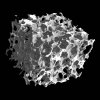Hello all,
Just want to thank everyone in advance for any insight/advice you may be able to give me. I use PS for academic purposes but do not have much experience with the 3D side of things. I am doing some academic work for an upcoming article and am hoping to do a 3D rendering of a microscopic scaffold. I have attached a 2D example of what I am shooting for as well as a another that looks like it was made using PS or a comparable program.
Does anyone have any advice for resources that I could check out to get me started in constructing something like this. Thanks again for any help, it would be greatly appreciated.
Just want to thank everyone in advance for any insight/advice you may be able to give me. I use PS for academic purposes but do not have much experience with the 3D side of things. I am doing some academic work for an upcoming article and am hoping to do a 3D rendering of a microscopic scaffold. I have attached a 2D example of what I am shooting for as well as a another that looks like it was made using PS or a comparable program.
Does anyone have any advice for resources that I could check out to get me started in constructing something like this. Thanks again for any help, it would be greatly appreciated.


